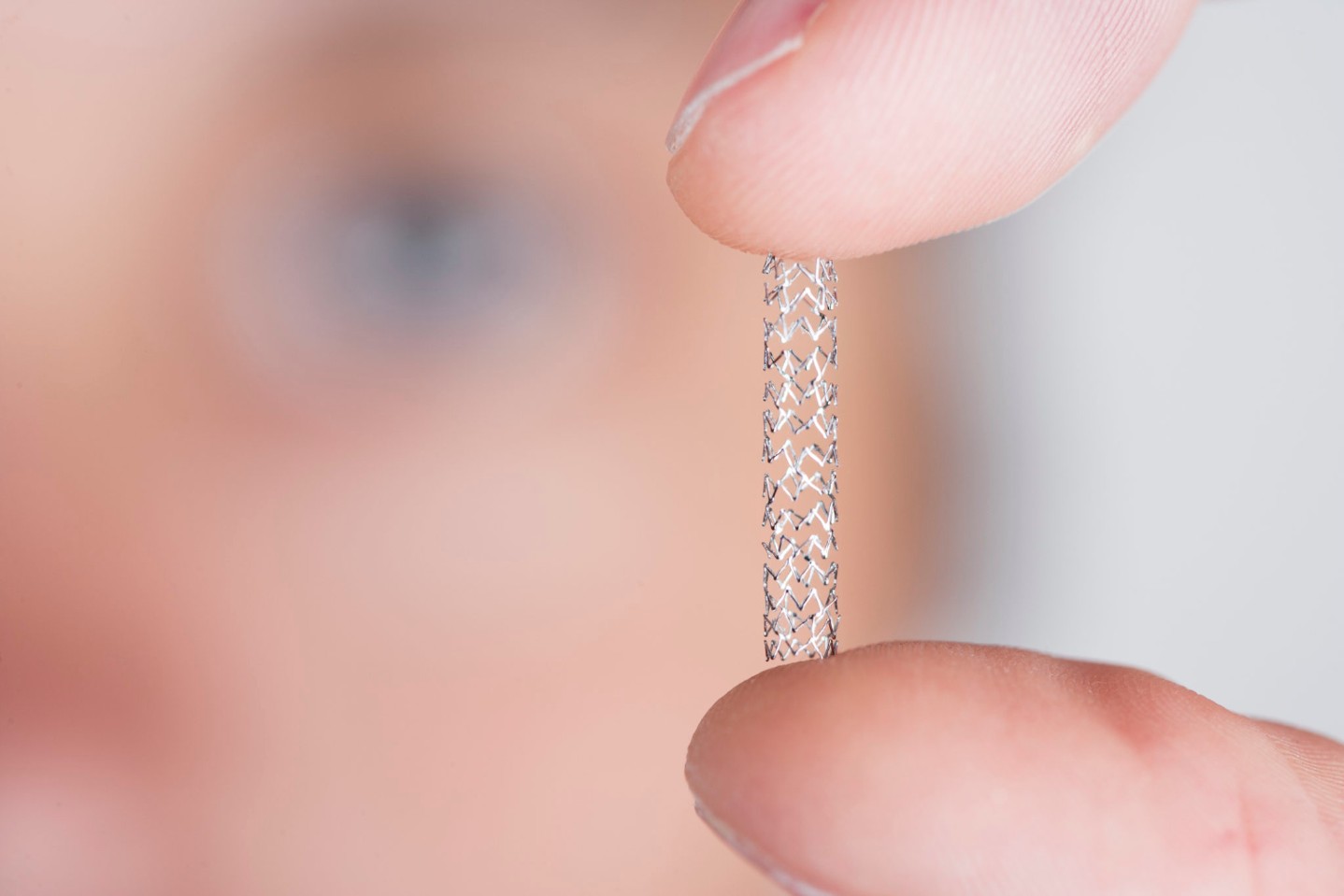As you probably already know, former president Bill Clinton recently underwent a “heart procedure” upon his return from a visit to Haiti that the press later clarified as angioplasty and placement of a stent. Mr. Clinton used to have quite a reputation as a man who never met a greasy hamburger he didn’t like and was rewarded for his habits with coronary bypass surgery in 2004. Nowadays, things are a little different around the Clinton household—from what I can tell he has given himself over to a healthier, more ascetic lifestyle with more time spent on the treadmill than at the drive-through.
After the procedure the ex-president (and current UN envoy to Haiti) had nothing but praise for his doctors, but reserved his most flattering comments for the technology itself:
"It's miraculous with the stents," Clinton told reporters, referring to the devices used to clear a clogged artery during the operation Thursday.
Clinton, 63, was speaking publicly for the first time since entering the New York Presbyterian Hospital. He was released earlier Friday.
"I didn't (take) any sedatives or anything, so I was alert. I wanted to watch it. I got to watch it on the monitor," he said.
Since catching wind of this story I have tried desperately to find a way to spin this into a clever yet respectful blog topic that would both entertain and inspire my readers. Something bold, something different—more than just a recitation about the merits of coronary stenting. Instead of my usual tired commentary I wanted to find a truly inspired angle.
But then I thought, why break with tradition? So, here you have it—everything you ever wanted to know about coronary stenting but never learned in junior high health class.
First off, a little nomenclature (that I’ve found is frequently misunderstood among non-medical people):
Angiogram (synonyms: heart catheterization, cardiac catheterization, cath) is where we run a small tube (catheter) through the artery to inject dye into the coronary arteries to take pictures. With this procedure we don’t fix anything. It’s more or less just a fancy x-ray with dye in the arteries. That’s the difference between this and . . .
Angioplasty (synonyms: balloon angioplasty, PTCA), where we actually expand a balloon inside a blocked vessel to open a passageway for blood to get down the clogged artery. Up until about 15 years ago, before the widespread use of reliable stents, most patients had angioplasty alone. The problem with angioplasty alone, though, was that the vessel frequently closed up again within 6 months and the patient had to return to get the whole thing done again. While this was good for the cardiologist wanting to make payments on his second home in Aspen, it wasn’t so good for patients.
Angioplasty with stenting is the most common approach today and this is what I’ll explain now.
Have you ever taken apart a ball point pen that has one of those little tiny spring thingies in it? Now picture the spring, but very small, looking more like chicken wire and made of really, really expensive metal.
To place a stent, the interventional cardiologist first performs angiography to take a picture of the blocked vessel so that he or she can make an estimate of how best to fix the vessel (please click here to see how not to do this). At this point the operator will thread a very small and flexible wire into the coronary artery and snake it through the narrow center of the blockage. He* then advances the wire as far out into the vessel as possible.
Using the wire as a rail the doctor slides a small catheter equipped with an inflatable balloon out to the point of the blockage. The balloon expands and all the cholesterol and platelet gunk simply gets squished outward into the wall of the vessel (click here for brief video). He will then repeat the process, but this time with a balloon that is wrapped with a non-expanded stent. The balloon inflates and the stent expands. The doctor deflates and removes the balloon and the stent stays in place. If he’s satisfied with the final result he’ll remove the wire and catheter and the patient is returned to the recovery room. The whole process generally takes less than 45 minutes.
When I first started out in cardiology I was a little surprised to learn that we don’t really clean out the cholesterol build-up from inside the artery when we fix it. This is not the roto-rooter job you get from a plumber when your pipes are clogged. All we do is use the stent to compress the unwanted plaque into the vessel wall and pin it out of the way with the stent.
The process of expanding a balloon is actually quite traumatic to the vessel wall (on a microscopic scale) and triggers a cascade of cellular reactions that makes the body want to heal the vessel with something akin to a scab. That sort of response is good for a scraped knee, but not so desirable inside a vessel that measures only a few millimeters and provides flow to what is arguably one of the more important organs of the body. A combination of the metal stent (to prop open the vessel) and the use of anti-clottting drugs such as aspirin and clopidogrel (Plavix) allows the vessel heal without unnecessary narrowing to the artery.
If done right the chance of a modern stent closing down is very, very low. In my experience a patient with a previous stent is more likely to develop a new blockage elsewhere in the circulation than inside the stent. Patients also recover very quickly from this procedure.
An article from February 13 reported on Mr. Clinton’s quick recovery and eagerness to get back to full activity.
"I feel great. ... I even did a couple miles on the treadmill today," Clinton said, speaking to reporters in a leather jacket from the driveway outside his home. He said doctors advised him "not to jog but walk. Not to walk fast up steep hills for a week."
While some commentators have suggested that Clinton needs to tame his active schedule I think is the wrong approach. If I were his doctor—knowing what I do about the success of modern stents—I’d encourage him to get back into life at full speed (especially on the treadmill). Since he’s become the go-to guy for massive natural disasters I don’t think we can afford to have him sidelined for long.
*Sexism alert: Please note how I’ve switched from the more correct “he or she” to the less verbose “he” when I refer to the cardiologist. I don’t mean to denigrate the other half by eliminating the “she,” but since only 17% of cardiologists in this country are women, and of those only 10% specialize in stent placement, I’m probably statistically on safe ground in adopting the masculine pronoun to describe my hypothetical interventionalist.





